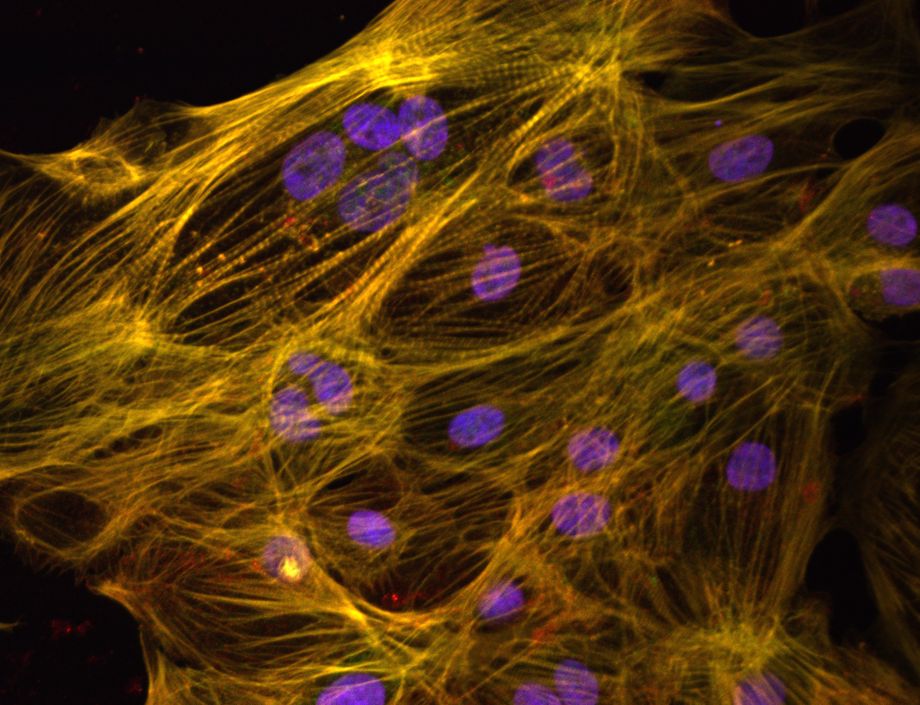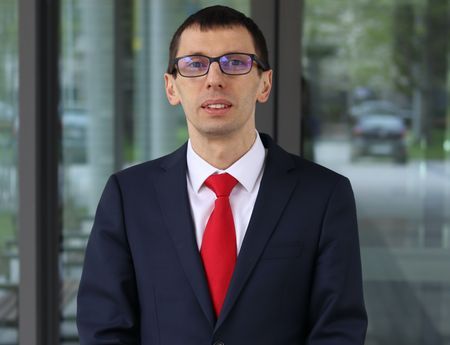
Scientists from the Department of Medical Biotechnology of the JU Faculty of Biochemistry, Biophysics and Biotechnology are unravelling the previously unknown mechanisms of heart function disorders in patients with Duchenne muscular dystrophy (DMD). Their studies have been recently published in Cardiovascular Research, one of the leading journals in the field of basic and clinical research into heart and circulatory system diseases.
As part of the studies carried out thanks to the MAESTRO grant from the National Science Centre, the team led by Prof. Józef Dulak, head of the JU Department of Medical Biotechnology presented the results indicating dysregulated iron homeostasis in dystrophin-deficient heart cells (cardiomyocytes). Mutations leading to the lack of this key protein, crucial for the work of the heart as well as skeletal and respiratory muscles, are responsible for DMD, a very serious incurable disease almost exclusively affecting boys. Its first symptoms are walking difficulties starting at the age of 2 or 3. When the boys reach their teens, the progressing damage to muscles leads to a severe disability and the necessity to use a wheelchair, while the developing muscular respiratory insufficiency and, most of all, cardiac insufficiency (cardiomyopathy) leads to a premature death of young men, usually in their 20s.
In their study described in the paper ‘Dysregulated iron homeostasis in dystrophin-deficient cardiomyocytes: correction by gene editing and pharmacological treatment’, whose first author is Dr Kalina Andrysiak, the former PhD student of Prof. Józef Dulak and Dr Jacek Stępniewski, the scientists made use of induced pluripotent stem cells (iPSCs). The method of obtaining such cells, recognised with the 2012 Nobel Prize for its discoverer Shinya Yamanaka, allows creating the stem cells by means of genetic reprogramming of differentiated cells, like skin cells or leukocytes. Then the iPSCs can be differentiated into any cells of an adult human body, including cardiomyocytes, which are very difficult or almost impossible to obtain from patients.
In collaboration with the team of Prof. Anna Kostera-Pruszczyk and dr hab. Anna Potulska-Chromik from the Clinic of Neurology of the Medical University of Warsaw, after obtaining the approval of a bioethical committee as well as the patients and their parents, the researchers from Kraków have isolated blood cells from a small amount of blood collected from the patients. Then they transformed these leukocytes into iPSCs. Additionally, in order to properly compare the mutation effect they repaired the DMD genes in patients’ cells using CRISPR/Cas9 gene editing method – another technique recognised with the Nobel Prize, which in 2020 went to Prof. Jennifer Doudna and Prof. Emmanuelle Charpentier.
Thanks to these efforts, scientists from the Department of Molecular Biotechnology could compare sick (dystrophin-deficient) and healthy cardiomyocytes (with repaired mutation in the dystrophin gene). They also carried out reverse manipulations, introducing mutation in the dystrophin gene of IPSCs received by reprogramming leukocytes from healthy donors. In that way they created valid cell models of DMD disease.
The conducted studies for the first time indicated iron homeostasis dysregulation in dystrophin-deficient cardiomyocytes. Since the cardiomyocytes obtained from iPSCs match heart cells in very young patients, the achieved results suggest that a similar problem can already be found in hearts of several-year-old boys with Duchenne muscular dystrophy. As pointed out by the researchers, these problems might be caused by a dysfunction in mitoNEET protein, responsible for removing iron from mitochondria (cell energy generators), the level of which was lower in dystrophin-deficient cardiomyocytes as compared to the healthy cells. What is important is that repairing mutation in the dystrophin gene by editing it using CRISPR/Cas9 restored the proper level of mitoNEET protein, indicating that this technique, already used or tested in treatment for other diseases (recently it has been applied to treat sickle cell anaemia and thalassemia), can possibly be used to improve heart functions of DMD patients.
Dr Kalina Andrysiak, Dr Jacek Stępniewski, Prof. Józef Dulak, and their collaborators have subsequently showed that dysregulated iron homeostasis and its consequences (increased production of harmful free radicals) can be limited by treating cardiomyocytes with a small molecule compound removing the excess of iron from cells (deferoxamine) or pioglitazone – a stabiliser of mitoNEET protein. Interestingly, pioglitazone belongs to the group of drugs (thiazolidinediones) used to treat diabetes by reducing concentration of glucose in the blood.
According to the researchers, the obtained results provide grounds for considering using the aforementioned medications or similar drugs in DMD treatment. Another reason for their use is the dysregulation of carbohydrate homeostasis and insulin function observed in DMD patients, which can also possibly be normalised with pioglitazone or similar substances. Obviously, relevant clinical tests can only be considered after further experimental studies aimed to verify the results discussed in the latest paper by the JU scientists.
The study, which also involved the use of global analysis of gene expression (transcriptomic) and protein production (proteomic), was possible thanks to the cooperation with other research groups from the Jagiellonian University (Prof. Elżbieta Pyza and Dr Olga Woźnicka from the Institute of Zoology and Biomedical Research, Dr. Guillem Yla and Dr Gabriela Machaj from the Faculty of Biochemistry, Biophysics and Biotechnology), as well as the University of Cologne.
Studies into Duchenne muscular dystrophy and other neuromuscular diseases (spinal muscular atrophy (SMA) amyotrophic lateral sclerosis (ALS), LAMA2 – LAMA2-MD dystrophy) are conducted in the JU Department of Medical Biotechnology thanks to the support from the National Science Centre. Prof. Józef Dulak is currently the MAESTRO grant leader for the second time and also led the recently concluded JPND project (a European project co-funded by the National Science Centre). Prof. Agnieszka Łoboda (paper co-author) is currently the OPUS grant leader, as part of which she will also study other mechanisms of DMD and ways of treatment for this disease. Dr Jacek Stępniewski is the SONATA grant leader, as part of which he investigates the role of one of microRNAs, also involved in the course of Duchenne muscular dystrophy. Dr Kalina Andrysiak is the PRELUDIUM grant leader, as part of which she has tested other methods of experimental treatment for DMD with the use of modified CRISPR/Cas9 technique.

Human heart cells (cardiomyocytes) obtained by differentiation of induced pluripotent stem cells (Photo: Department of Medical Biotechnology, JU Faculty of Biochemistry, Biophysics and Biotechnology).





